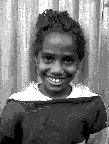

a. Analysis:
The symbolical elements used in this story seem to be:
I suggest that this makes it plausible that the child (the displaced community) is symbolised by the turtle.
In general however, the turtle is not seen with
great sympathy within the Amharic context, although it is definitely an
item: in one of the larger shops that provide ceramics in Addis one can
see many forms of turtles between the statues that all seem to be highly
symbolical.
The turtle is in general seen as somewhat lazy,
though headstrong.
The meaning of the story would be:
The displaced, not very active, talks to the people
of the real world (people outside the shelter), but is not happy. He observes
the mighty people, the NGO’s (The big bird) and in envious of their capacities.
He wishes to be like them, and begs for help.
The Mighty Farenji (expatriate) comes down and
promises to help.
The rope stands for the material help, that,
however, silences the displaced: by taking the rope in its beak, it is
doomed to shut up.
While flying, the vision of the most wanted object:
the big house, (harly a symbol any more in this context, more an icon,
forces the turtle to speak, but what the turtle would have said is not
disclosed: the death of the turtle is left imminent.
Contradictory:
The one element in this story that seems to be
contradictory with this explanation is the fact that the turtle is expected
to get the rope herself. This seems not in line with the general perception
of ‘help’ , although this is the perception of the helpers. It could be,
however, that this element in the story relates to the feeling with the
displaced that ‘help’ is in reality paid by themselves rather than
by the outside world.
Although I am very much in favour of working on the base of local frames of analysis, I do not adhere to the total relativism of my own. Even stronger, to a certain extend I feel that we are becoming partners within the global village, and that this whole IPSER/AAU project is exactly about this fact.
To begin with, we feel that the story is extremely
negative, and that we should look for ways to develop, together with the
children, an ending to the story that does more right to the turtle (the
displaced).
We have therefore chosen to perform the story
as is, than to have a discussion with the children, to see how we can change
it. The basis for this change will be that we explicitly say that WE do
not like the end of the story.
Astatgetchew has with this in mind, found a song
in which Birds look down on heroes, or just married couples, that exist
in Ethiopia and that is very well known.
He has developed new texts very close to the
original, and we will be working with changes in minor an major settings
of the theme-melody.
With the actors we have studied the main characters
and the technique to show the emotional logic behind the story.
We will try to create a stepwise performance in
which the children ‘sing’ the action with the actors, coached by storyteller,
alternated with acted scenes, and a small game (to search for the rope).